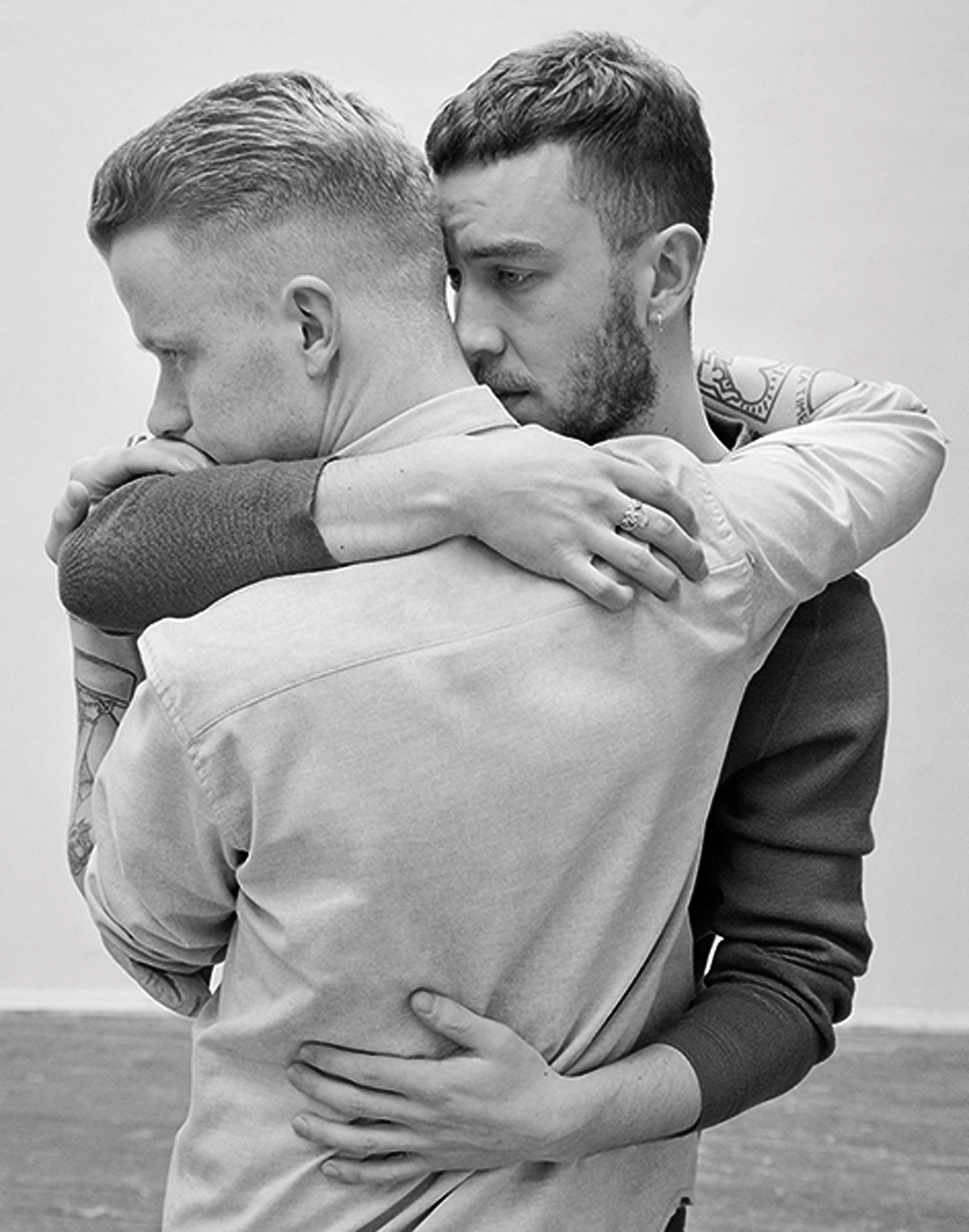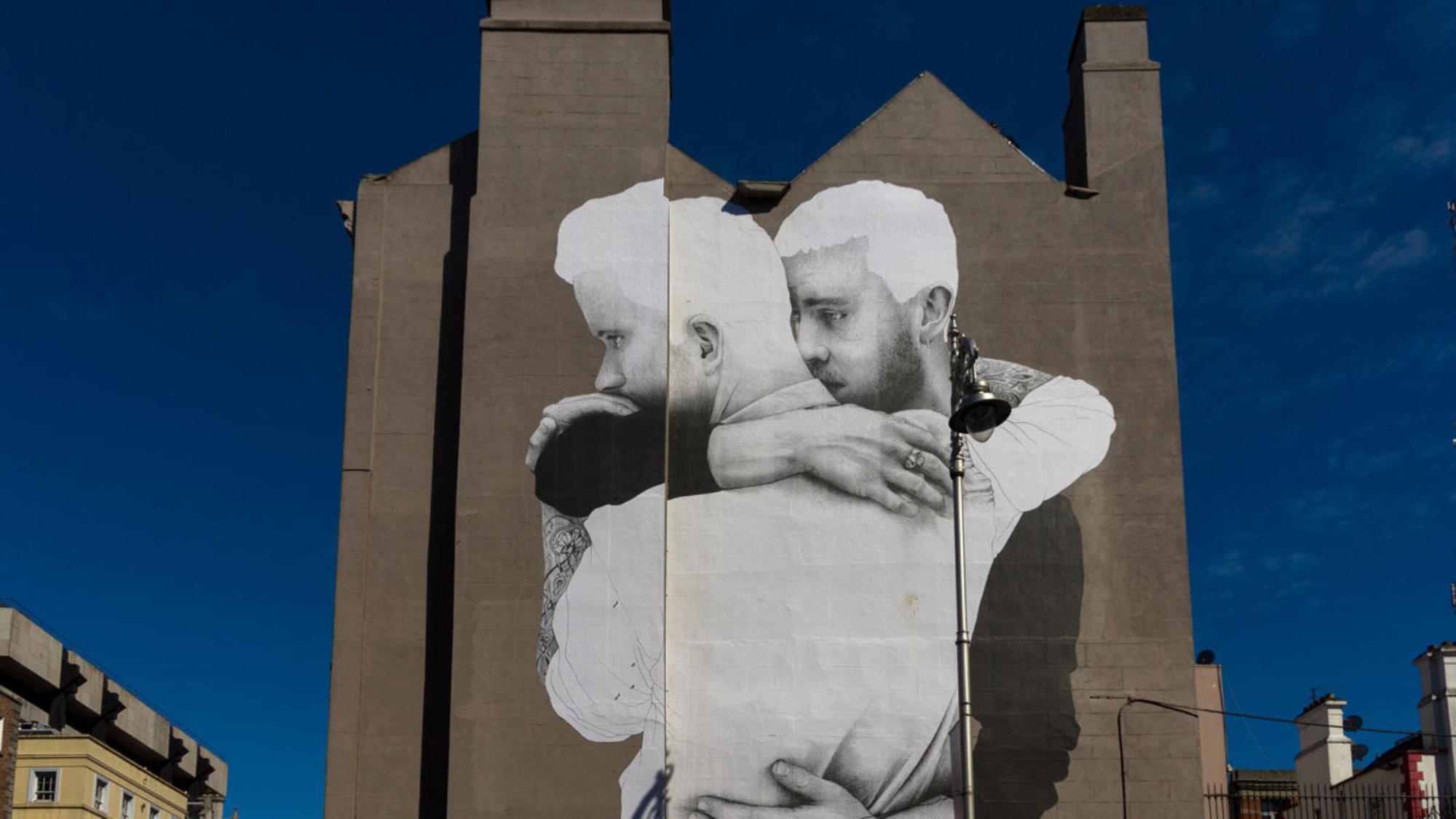Despite the tempting pull of London, Dublin and Ireland are changing at the speed of light. On 22nd May this year, we were the first country in the world to vote by public referendum in favour of same sex marriage. Does anything signify a new perspective better than this? We are shaking off dated, stereotypical representations of Ireland that never had anything to do with the city and culture I grew up in. A more confident self-perception is driving change and changing people’s attitudes towards working on the fringe of Europe. Illustrator Kathi Burke says, “I can’t imagine any other city inspiring me and challenging me as much as Dublin does. It’s cruel without being heartless, and romantic without being maudlin.”
The limitations of an emerging industry can be viewed as a glass half full or a glass half empty. In less than a decade, Ireland has flipped from Celtic Tiger to recession. Property bubbles have burst and Hubba Bubba’d again, banks have been bailed out, politicians have screwed us over, government has charged for water and the weather in summer still sucks. But in the same breath, the awe-inspiring Offset conference was launched uniting an Irish and international design community, studios like South Studios and Block T brought independent professionals into shared work spaces, Thread magazine presented an alternative fashion perspective and distributed for free, Pivot Dublin launched a bid for World Design Capital creating a new framework for the city to build on, the Web Summit began to cater for the insane number of Google’s and tech businesses that have landed from space and even the government anoints Irish Design 2015, a year to promote our creative industries at home and internationally, to support the creation of jobs in this sector.
There aren’t many people working in any area of design here who wouldn’t reference Offset as a defining turning point for what creative Dublin has become. The message is that we are Irish and we are international. Creative Director and co-founder of Offset, Bren Byrne, comments, “In the seven years we have been operating, we have seen the city transformed by a generation of DIY creatives and an ever-increasing definition of what ‘creative’ means. We are a small city and we don’t have all the assets and opportunities of London or New York but you can get things done here and make a mark if you are passionate and are driven. We feel proud to be part of the rich creative landscape and are full of optimism for what’s next.”
There is a connectivity in Dublin which is far from parochial. Multidisciplinary studios, collaborative projects, creative conferences and cultural festivals unite a design community which spans North and South of the city and is connected with just a bike ride. The fact that it’s easy to get around broadens horizons and allows you to explore outside of your own territory. A small city with a population of 1.2 million, it’s divided by a river and connected by a canal. The coexistence of Calatrava bridges and the possibility of a lad on a horse cruising by make for an pretty interesting landscape. “Dublin has a unique set of characteristics. The social fabric and architecture of our city is different to others. Dublin is the opposite of the Irish cliche; we are urban, agile and creative”, says Garrett Pitcher, owner of Indigo & Cloth retail store and creative agency.

More renowned for our pubs than our design legacy, social change can be tracked in the seismic shift we’ve had towards food. We realise that we’ve got it pretty damn good here, escaping the industrial revolution and holding onto our farming industries. There is a new approach to Irish ingredients from Dillisk seaweed to grass-fed beef and this appreciation for what’s available on our doorstep is paralleled across the creative industries.
The Fumbally, a food focused creative environment, is a self proclaimed culmination of years of travelling and experimenting, making mistakes and sharing experience. Co Founder Aisling Rodgerson notes a driving factor for the business, “Dublin for us is all about the people. There are so many different groups, defined by their vocation, musical or creative interest, or social circles, but everyone is connected by no more than one degree of separation. We all feed into each other, support each other and inspire each other in some way. Rivalry never really comes into it.”
There is a definitive noise, which is unashamedly quiet, being created by the Irish scene. People are proud to be passionate about what they’re doing and pushing their own boundaries without needing to sound off about it constantly. There is just less bullshit here and it keeps your head clear to do the things you want to do. Andrew Griffin returned to Dublin from Copenhagen to start a new architectural practice Urban Agency (which maintains a Copenhagen office), and is changing the face of Dublin and other cities with ground-breaking civic and domestic projects. He notes, “What I find so unique about Dublin is the constant swirls and cross-pollinations in the design scene. It’s a truly exciting place to base an international office and right now we are working on projects here in Dublin and as far away as Canada and Hong Kong. I would go as far as to say because it’s a small city, it’s easier to foster a design culture and a design office because there are less pressures than London or New York.”
For many Irish creatives there has been a prolonged period abroad and for those of us who have always called the Fair City home, we are not strangers to travel and working abroad. Aisling from the Fumbally comments, “We’ve taken so much inspiration from abroad and implemented it in our own way without feeling the pressure of a ‘scene’ that dictates a certain thing in a certain way. There’s a freedom to being part of a small city with an active and vibrant community.”
Photographer Sean Jackson considers the complexity of foreign allure against the sense of space that Dublin has to offer. “That’s not to say one is right and one is wrong as I think it’s important that these bigger and smaller creative hubs co-exist and draw from one another. Neither one is better than the other just each more nourishing depending on who the artist is and what is important to him or her.”
The fashion tide at home is rising too thanks to the superstar careers of Dublin’s Simone Rocha and Derry’s J.W. Anderson. Following on the NewGen wave are womenswear designer Danielle Romeril and menswear designers Alan Taylor and Rory Parnell Mooney. Yes, those guys have all left Ireland, but what they have left behind is a tangible dream for an emerging industry. Slowly but surely, new manufacturing and production facilities are surfacing due to the proliferation of emerging and established designers looking to develop their labels at home. Just like food, there is a new fashion connection forged with the historical textile industry on our doorstep, encouraging a sustainable business future for fashion in Ireland.
So why not move to Dublin? From a personal perspective, Dublin has offered me more opportunity to collaborate, experiment, publish and celebrate in a way I don’t think could have been possible anywhere else.
Credits
Text Aisling Farinella
